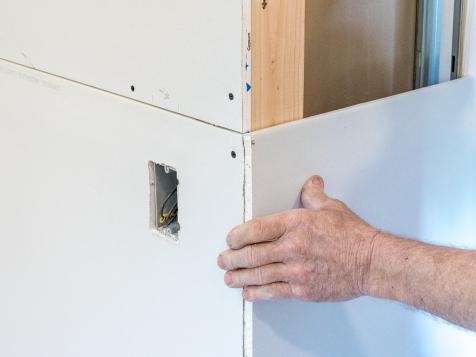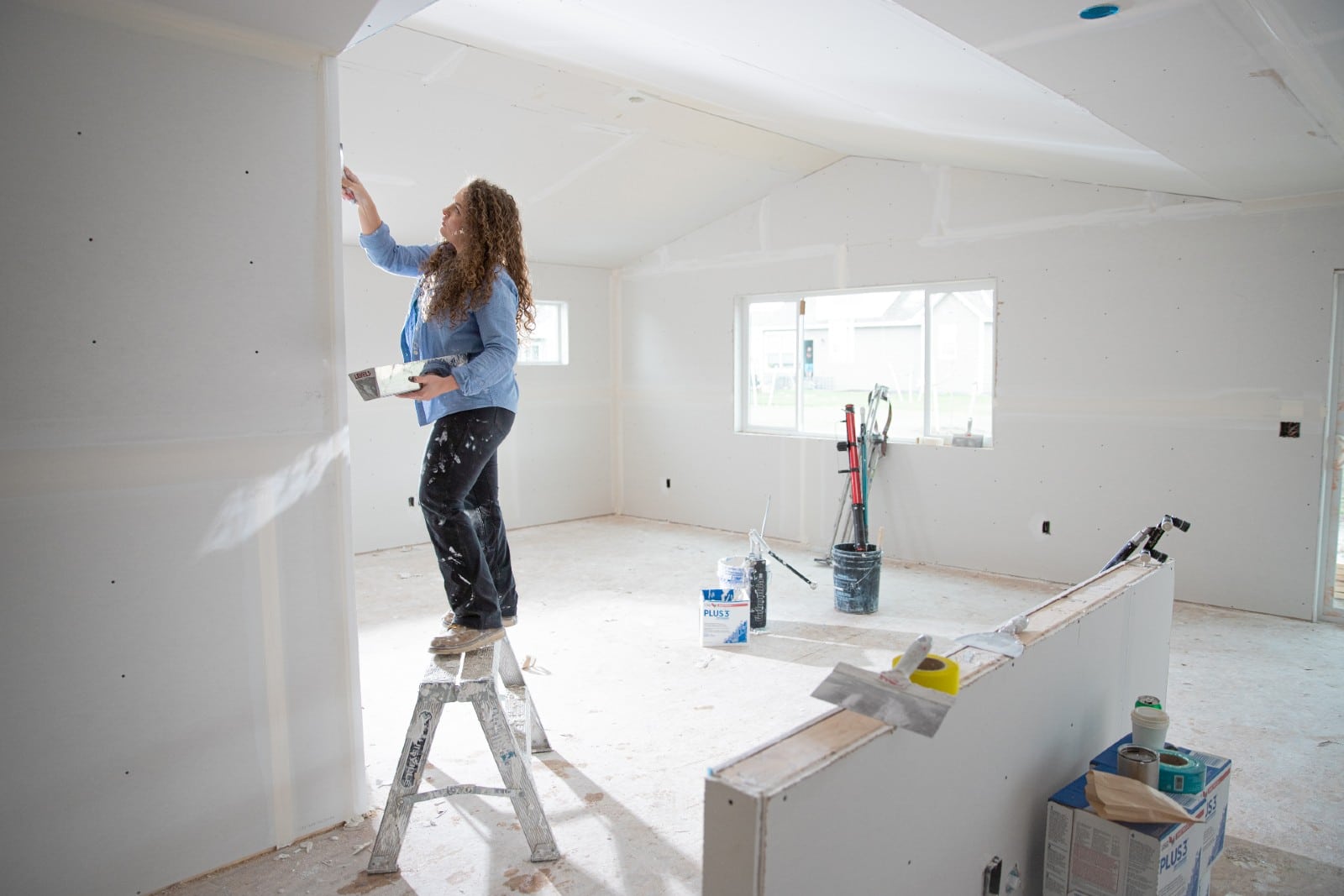Selecting the Right Drywall Contractors for Your Task
Selecting the Right Drywall Contractors for Your Task
Blog Article
Everything You Need to Understand About Drywall Setup: A Comprehensive Guide

Recognizing Drywall Basics
Recognizing the fundamentals of drywall is crucial for any kind of successful setup job. Drywall, additionally known as gypsum board or plasterboard, is a prominent building and construction material utilized to develop interior walls and ceilings.
One crucial facet of understanding drywall is knowing the different kinds readily available. One of the most common kinds consist of regular drywall, moisture-resistant drywall, and fire-resistant drywall. Normal drywall is suitable for many interior applications, while moisture-resistant drywall is suggested for locations with high moisture, such as restrooms and kitchen areas. Fire-resistant drywall is made to offer additional security versus fire and is frequently needed in business structures and multi-family homes.
Another key aspect of drywall basics is recognizing the standard dimensions and densities offered. The most common sizes are 4x8 feet and 4x12 feet, with densities varying from 1/4 inch to 5/8 inch. Thicker drywall is commonly made use of for applications that need enhanced fire resistance or soundproofing.
Tools and Materials Needed for Drywall Installment
To efficiently mount drywall, it is crucial to have the essential devices and products accessible (drywall Edmonton). These tools and materials are essential for achieving a specialist surface and making certain the toughness of the installment
Primarily, you will certainly need a gauging tape to accurately measure the measurements of the area where the drywall will certainly be mounted. An utility blade is essential for reducing the drywall to the needed size and shape. In addition, a drywall saw can be utilized for making extra complex cuts, such as around home windows or outlets.
Following, you will certainly need a screw weapon or a drill with a screwdriver little bit to protect the drywall to the wall surface studs. Screws, particularly drywall screws, are necessary for connecting the drywall to the studs. It is necessary to make use of the proper length of screws to make sure a flush and protected installation.

In terms of materials, you will need the drywall itself, joint compound for completing joints and voids, and tape for reinforcing the joints. Sandpaper or a sanding block will be needed for smoothing out the joint compound after it has dried.
Preparing the Space for Drywall Setup
Before proceeding with the drywall setup, it is necessary to effectively prepare the area to make sure a effective and smooth setup process. Preparing the space involves several essential steps that need to be adhered to diligently.
Firstly, it is crucial to clear the location of any kind of furnishings, components, or other objects that may obstruct the installation process. This will provide the installers with ample room to function and navigate around. Furthermore, it is recommended to cover the floors and any kind of continuing to be products with protective sheets or ground cloth to avoid any type of damage or particles from falling onto them.
Next, it is important to evaluate the wall surfaces and ceiling for any type of existing damage, such as splits, holes, or water stains. These concerns must be repaired prior to the setup to guarantee a smooth and also surface area for the drywall. Any loosened paint or wallpaper ought to also be gotten rid of, and the walls should be extensively cleaned up and dusted.
Moreover, electrical and pipes fixtures should be shut down drywall installation and safeguarded to avoid any type of accidents or damages during the installment process. It is crucial to turn off the power supply to the location and remove any kind of electrical cover layers prior to starting the installation.
Last but not least, it is a good idea to consult with a specialist or refer to regional building ordinance to guarantee conformity with safety guidelines and obtain any type of essential permits prior to continuing with the installation. By appropriately preparing the room, you can guarantee a effective and effective drywall installation process.
Step-by-Step Overview to Hanging Drywall
To make certain a successful drywall setup, it is very important to comply with a detailed guide for hanging the drywall (drywall contractors). This process needs accuracy and attention to detail
First, gather all the necessary devices and materials, including drywall sheets, an energy blade, a drywall saw, a tape measure, a drill, and screws.
Next, start by determining the measurements of the wall surface or ceiling where the drywall will certainly be mounted. Transfer these measurements onto the drywall sheets, marking where cuts need to be made - Edmonton drywallers. Make use of a straight side and an utility knife to score the drywall along the marked lines, then snap it along ball game line
When the drywall sheets are cut to size, they can be hung on the wall or ceiling. Start at one corner and position the very first sheet vertically against the framing. Use screws to protect the drywall to the studs, ensuring to leave a little space between sheets for growth.
Continue this process, working your method across the wall or ceiling. Make sure that each sheet is level and flush with adjacent sheets. Use a drywall saw to remove any required openings for electric outlets or buttons.
Ending Up Techniques for an Expert Look
Since the drywall sheets have actually been successfully hung, it is necessary to use ending up methods that will result in a expert and polished look. Accomplishing a smooth and perfect finish on drywall calls for cautious attention to information and making use of proper devices and methods. One of the initial steps in the finishing procedure is to fill up the joints and screw indentations with joint substance. This can be done by applying a slim layer of compound over the joints using a taping blade, and afterwards installing drywall tape into the substance. When the tape is in area, another layer of substance ought to be used over it, feathering the edges to develop a smooth shift. After the substance has dried out, it is crucial to sand the surface to eliminate any kind of flaws and create a smooth coating. A pole sander or fining sand block can be used for this objective. The wall surfaces should be keyed and repainted to complete the ending up process. Utilizing high-quality paint and applying it equally with a roller or brush will make sure a professional and resilient coating. By following these completing strategies, your drywall installation will have a expert and sleek appearance.
Verdict
Finally, recognizing the essentials of drywall setup is necessary for a successful project. By utilizing the proper devices and products, preparing the area sufficiently, and complying with a step-by-step overview, one can accomplish a professional-looking surface. Attention to ending up methods will further boost the general appearance. With this comprehensive overview, anybody can confidently take on a drywall setup project.
The most typical kinds include normal drywall, moisture-resistant drywall, and fire-resistant drywall. Regular drywall is appropriate for most indoor applications, while moisture-resistant drywall is recommended for locations with high humidity, such as washrooms and kitchen areas. Screws, especially drywall screws, are required for affixing the drywall to the studs. These issues need to be repaired prior to the installment to guarantee a smooth and also surface for the drywall. By complying with these ending up techniques, your drywall installment will have a professional and refined appearance.
Report this page